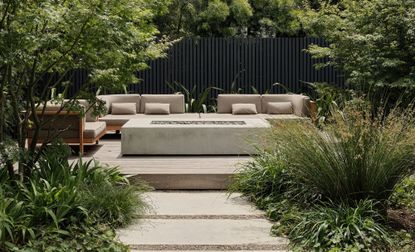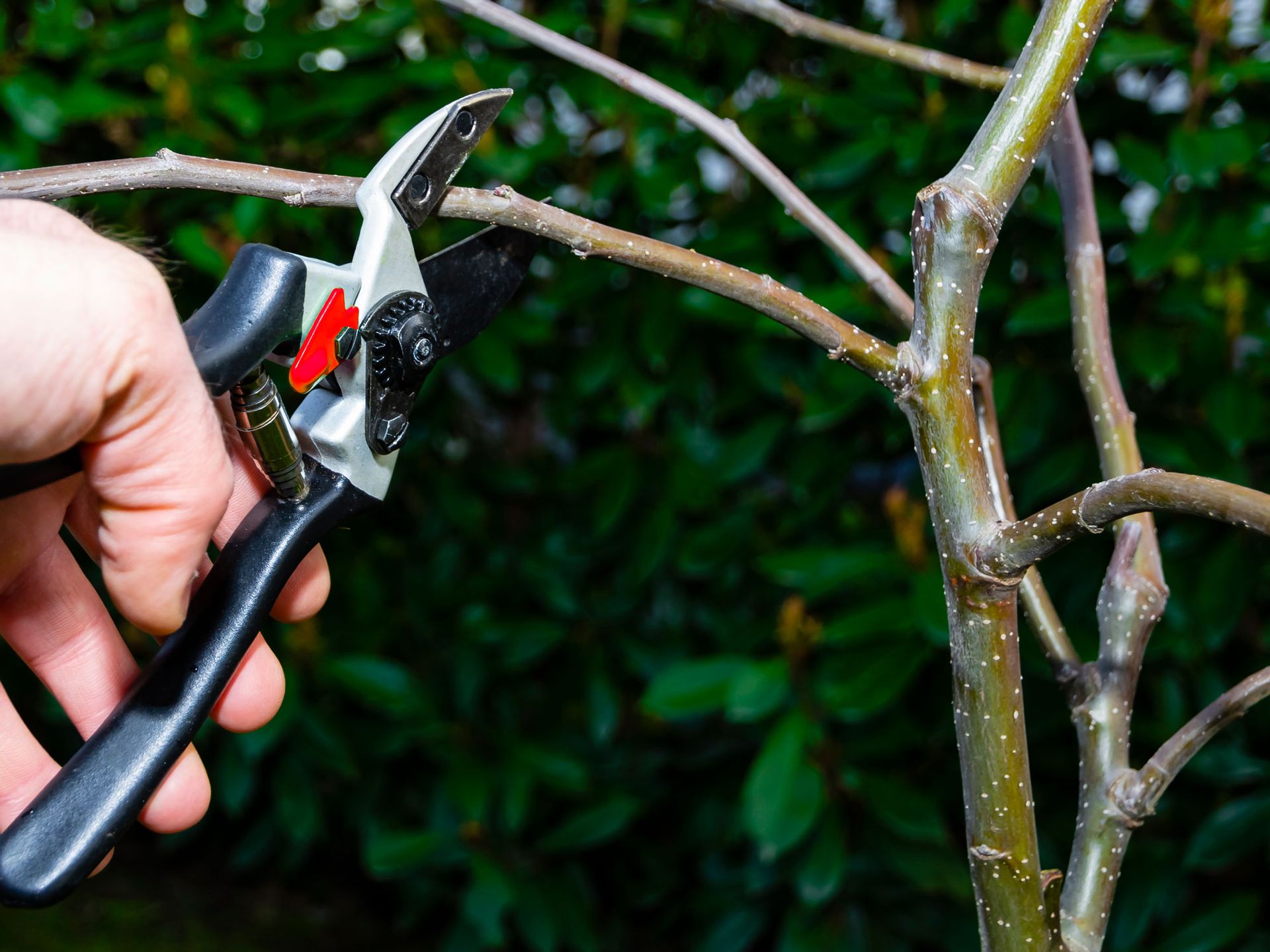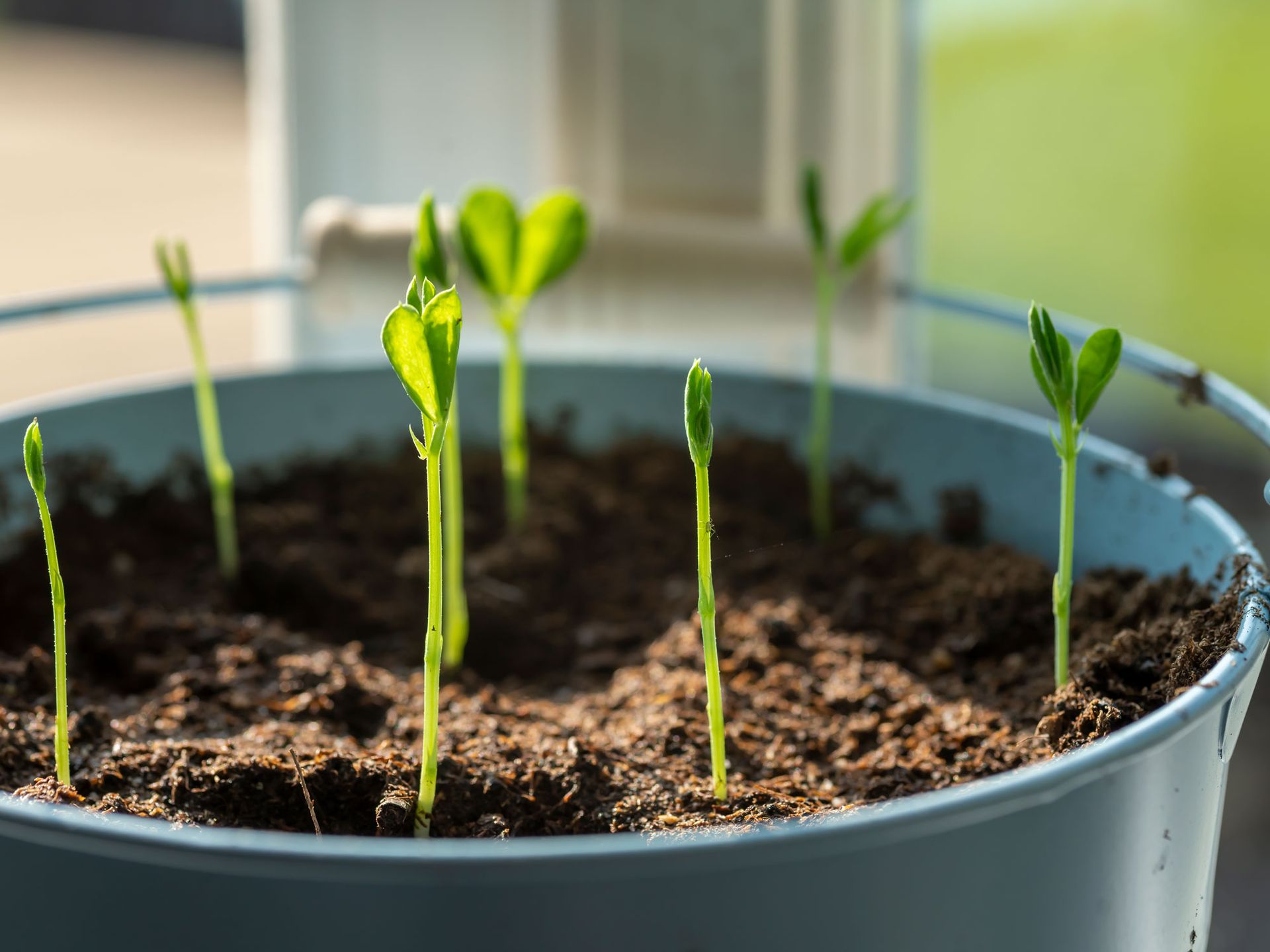The Only 10 Gardening Jobs You Need Do in December — Ensure The Best Backyard Possible Next Year
This month, the days are short but the fresh air means there's every reason to get outside and enjoy what your backyard has to offer at this time of year

Quiet moments in the backyard are a welcome break from the busy holiday season. Weather permitting it's a good time to do those last few jobs to make sure that everything is in order for the start of the growing season next year.
It’s a forager’s delight too when it comes to picking natural decorations for the home. Winter berries, interesting twigs, shapely seed heads, and armfuls of evergreens are just waiting to be snipped to take indoors for filling vases, as well as creative projects like natural garlands and wreaths.
But there are backyard jobs to be done too. It’s time to prune climbing roses to ensure you get the best blooms next summer, prep flower and vegetable beds for new year planting, move winter containers to a sheltered spot, fill up the bird feeders, and think about ordering flower and vegetable seeds.
'Now is the best time of year to plan your garden,' advises Nancy Trautz-Awot, horticulture specialist at Burpee Gardening. 'Keep an eye out for seed and plant catalogs at the end of December to plan for next year's garden.'
So take advantage of this quiet time in the garden and make sure you tick off the key points on our to-do list.
1. Prepare and protect for bad weather

Cold, wet, and windy winter weather can damage trees, shrubs and other plants, as well as the structures that support climbing plants such as pergolas and trellises. Make sure everything is securely in place, and climbers are properly attached by adding more plant ties if necessary.
Pile straw or bracken around the base of tender shrubs and climbers to protect them from cold temperatures.
Gently shake snow from plants as the weight can cause damage and in the worst case snap slender branches. Most evergreens and shrubs have adapted to normal snow loads, but after a particularly heavy fall use a yard broom - like this affordable heavy-duty one from Amazon for under $20 - to brush off snow that's accumulated on branches. In some cases a blanket of snow actually helps perennials such as hellebores survive the winter.
2. Layer up mulch around plants

Put mulching at the top of your to-do list in December if you haven't done so already. Put simply, mulch is the protective top layer you add to soil that protects plants from winter chills, suppresses weeds, nourishes the soil and keeps the dormant garden looking tidy.
At this time of year mulched soil loses heat more slowly, so it can protect plant roots from freezing when the weather gets colder. As it breaks down it feeds the soil with nutrients to give it a rich top-up in preparation for spring planting.
Leaf mold, spent mushroom compost, bark chippings - which are the easiest to buy from Amazon here if you've not been making leaf mold - , garden compost and straw will all do the job nicely. Just be sure not to let the mulch touch the plant stems.
3. Rake up leaves and other plant debris

Perhaps you thought you were done with sweeping up fall leaves (or maybe you overlooked it altogether) but it's a good idea to check again for any build-up from late leaf drop. Piles of leaves easily get blown into corners where they can harbour slugs and other pests.
Scoop up any further fallen leaves and other plant debris from water features, leave them on one side to allow any wildlife to escape, then add to the compost bin.
Trim dead foliage and stalks from perennial plants too. Finish clearing old crops and debris from vegetable beds, but only compost disease-free material.
It's also a good idea to gather up any fallen leaves if any of your rose bushes suffered from blackspot during summer. This will reduce the chance of infection next year.
4. Build up a good supply of your own compost

Now is a good time to build or buy a compost bin - our editor has this one from Amazon and swears by it - if you don't already have one. Good compost is made up of a combo of soft and woody, green and brown materials such as fresh fruit and vegetable scraps, grass clippings, fallen leaves, pruned wood and even bits of shredded cardboard.
Work on getting a good mix of these ingredients now as part of the things to do in your garden in December, and next year you will be rewarded with a supply of gorgeous rich, dark, crumbly stuff that you can use as a soil enhancer or mulch.
Any newly fallen leaves can be added to the compost bin now to rot down. Turn your compost every couple of weeks to mix the ingredients and help the decomposition process along. Cover the compost bin with a piece of old carpet or some plastic sheeting to prevent the compost becoming too cold and wet to rot down.
5. Prune these plants now

Winter is a good time to prune any wayward deciduous shrubs and hedges while they're in their dormant phase. It's also a good time to prune Japanese maple trees (Acer palmatum) to get rid of any dead or damaged shoots.
If you prune climbing roses now you'll get more blooms next year. Leave the main stems alone and instead concentrate on thinning out the side shoots. Cut above a bud, then tie in the stems to the support when you’re finished. It's also a good idea to tidy up wisteria now too.
Prune large fruit trees such as apples and pears to control their shape and size. Aim for an open, balanced structure to get more fruit next year. Meanwhile plums, cherries and other stone fruits should not be pruned until the summer.
Wait until spring to trim evergreen shrubs.
6. Plant these shrub varieties now

Bare root rose bushes waiting to be planted
There's no time quite like winter for spotting gaps in your planting, so think about adding shrubs to fill out flowerbed designs and getting them in the ground now as long as it isn't frozen or waterlogged.
The season for planting winter-flowering shrubs is from October to April so it’s fine to add this to your list of things to do in your garden in December.
Planting bare root shrubs are another consideration for things to do in your garden in December, as they are widely available in winter. They should be planted as soon as possible after getting them home. This means the best bare-root fruit trees, ornamental trees and roses are all good choices for planting out on sunny days.
If you live in a mild climate you can continue to lift and divide herbaceous perennials to get more plants and fill in gaps in your flowerbeds.
7. Take good care of winter containers

Heap plenty of TLC on winter container ideas you've already planted up. Make sure they're in the sunniest and most sheltered spot in the garden to protect them from frosty weather, high winds and heavy rain.
Move plants in pots to a more sheltered spot if conditions turn very cold, as their roots are more exposed to the elements than plants in the ground. It's a good idea to group them together next to a sheltered wall of your house as this tends to be the warmest spot. They can also be mulched with compost for an extra layer of protection when it's freezing.
Make sure containers are lifted off the ground on terracotta feet like these low priced ones from Amazon so that any water that might have collected in the base of the pot can drain away. This will prevent the pots cracking if there’s a frost. In the event of snow, think about protecting your plants with a layer of horticultural fleece too.
Keep winter containers tidy by deadheading them regularly and snipping off any faded foliage to prevent it rotting in the pot. Regularly check the compost for signs of drying out, but be careful not to overwater them.
8. Look after wildlife

As the cold weather sets in it’s time to look after the birds, so make this one of your priority things to do in your garden in December. Make sure bird houses and feeders are located in a secure and sheltered position that’s not exposed to wind and rain.
Fill up bird feeders with calorie-rich foods like these seed balls. You can also try using cooked rice and porridge oats. In wet or snowy conditions remove any bird food that's gone soggy as it will quickly rot. A supply of fresh water is also essential, especially if it freezes. Put a small ball in your bird bath to give birds access to unfrozen water.
Stack up a pile of old logs in an undisturbed corner of the garden to provide shelter for wildlife.
9. Keep your vegetable garden productive

Keep an eye on vegetables you're growing now if it gets freezing and keep frost cloths, fleece or straw to hand in order to protect crops on cold nights.
There are still vegetables you can grow in December if the conditions are right. Salad leaves like mustard greens, lambs lettuce and ‘Winter Gem’ are hardy and can be grown outside. Broad bean seeds can be planted directly in the ground but keep fleece or a cloche handy just in case.
If you live in an area with a mild climate you can plant garlic sets outdoor as long as the soil is well-drained. Other winter crops include cabbages, leeks, leafy greens like kale, chard, cavolo nero and perpetual spinach, as well as purple sprouting broccoli.
Start to plan your vegetable garden for next year and order your seeds now. Make a note of what you planted where this year so that you ensure good crop rotation to avoid pests and diseases.
10. Sow flower seeds for continual summer blooms

Sweet peas seedlings
You can grow quite a selection of flower seeds even in midwinter as long as you have a small greenhouse, heated propagator or warm windowsill. When sowing flower seeds in December it's important to maintain a suitable temperature so factor in your local growing conditions before making your choice.
Try sowing sweet peas indoors, using cardboard loo rolls so they can easily be transferred to the garden once the weather warms up. When your seedlings are around 10cm tall pinch out the growing tips to encourage them to bush up.
Container gardening favorites geraniums are another easy option to sow from seed. Sow under glass any time from December-April, and keep at a steady temperature of 65-70°F. Plant out your young plants when danger of frost has passed.
Also get some seeds started now for our all-time cottage garden favorite snapdragons, and you will get a head start when it comes to transplanting them in your flower garden in spring.
 EDITOR'S FAVORITE
EDITOR'S FAVORITE
Price: $5.95
Quantity: 400
Be The First To Know
The Livingetc newsletter is your shortcut to the now and the next in home design. Subscribe today to receive a stunning free 200-page book of the best homes from around the world.
Lifestyle journalist Sarah Wilson has been writing about flowers, plants, and garden design and trends since 2015. Having already studied introductory garden and landscape design as well as a course in floristry she is currently adding to her list of qualifications with an RHS Level 2 course in the Principles of Plant Growth and Development. In addition to livingetc.com, she's also written for homesandgardens.com, gardeningetc.com, Modern Gardens and Country Homes & Interiors magazines.
-
 These 12 Best Table Lamps for Your Desk — Perfect Glows for a Creative Home Office
These 12 Best Table Lamps for Your Desk — Perfect Glows for a Creative Home OfficeThe best table lamps for your desk is have a soft, targeted glow. Elevate your WFH set-up with these stylish picks endorsed by Style Editor Brigid Kennedy
By Brigid Kennedy Published
-
 The Nespresso VertuoPlus is 30% Off for President's Day, and it's Kim Kardashian's Coffee Maker of Choice
The Nespresso VertuoPlus is 30% Off for President's Day, and it's Kim Kardashian's Coffee Maker of ChoiceThis sleek and stylish coffee maker was spotted in Kim's home bar, and you can currently save $60 if you buy yours from Amazon
By Lilith Hudson Published

